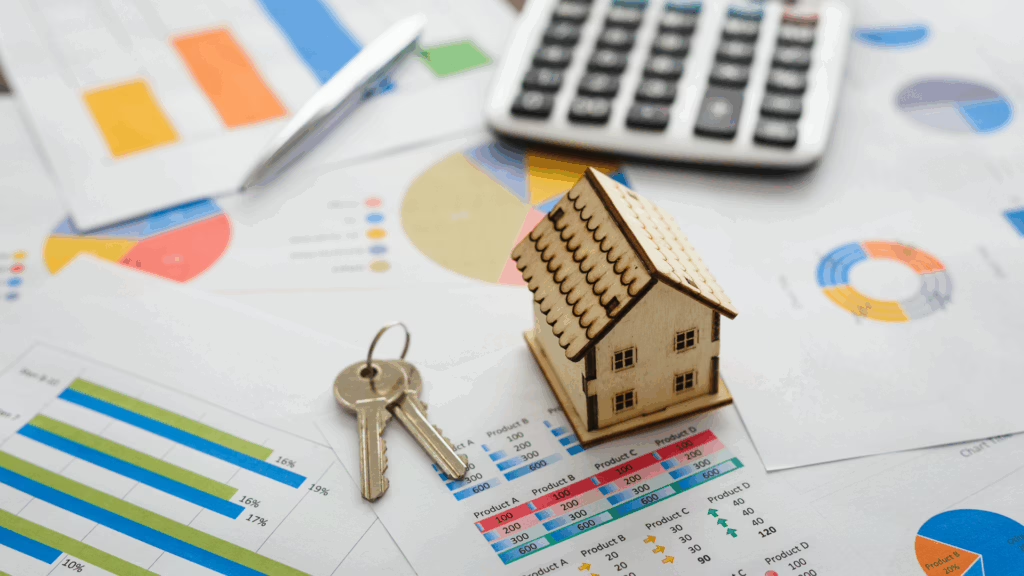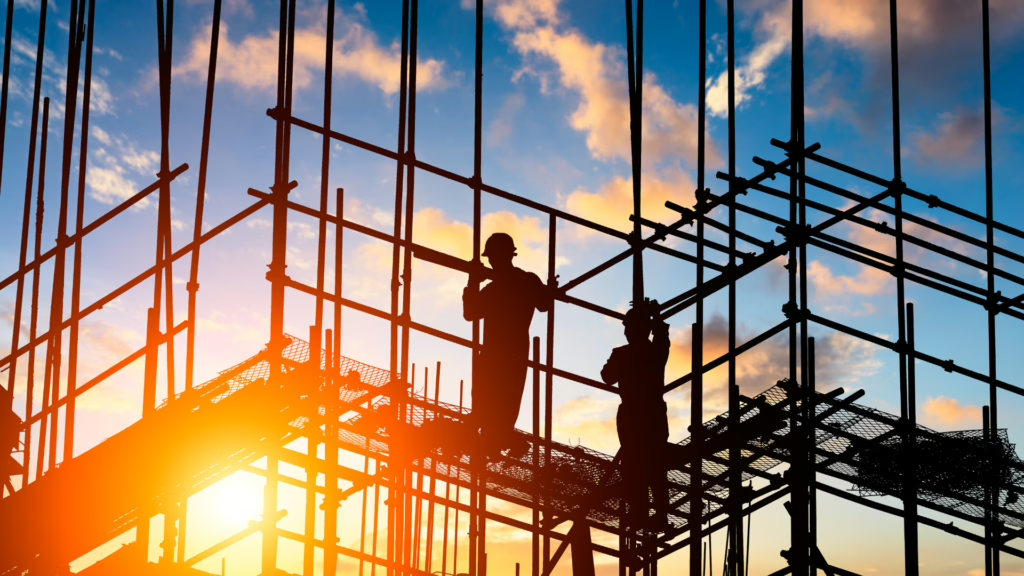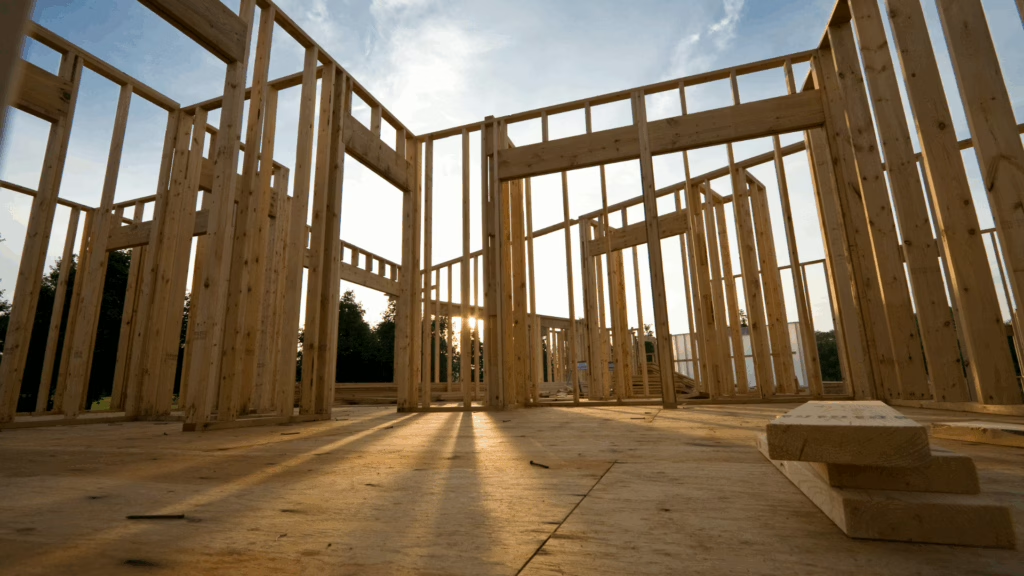In an uncertain housing market defined by tight inventory, rising costs, and fluctuating interest rates, homeowners are increasingly faced with a pivotal question: build a new home or renovate the current home? Both options can provide a pathway to a dream home. However, the decision becomes far more nuanced, entwined with budget realities, location constraints, and shifting market dynamics.
Choosing between building a new home or renovating one’s current home is mainly about strategy. Whether you are looking to put down roots permanently or increase your property value in preparation for a sale, understanding the implications of building or renovating is necessary. This article examines the pros, cons, and critical considerations of building new versus renovating your current home. We include expert insights, real-life examples, and the latest market data to guide your next move.
The State of the Housing Market

The U.S. housing market has seen unprecedented swings over the past few years. After the pandemic-era surge in demand and a chronic shortage of housing, home prices have remained high. Inflation and interest rate hikes have made borrowing more expensive, and construction costs have continued to increase.
According to the National Association of Home Builders (NAHB), the average cost to build a new home increased by nearly 35 percent between 2019 and 2023. Simultaneously, the cost of major renovations has also ballooned. A midrange kitchen remodel, for instance, now averages around $77,000, according to Remodeling magazine’s 2024 Cost vs. Value report.
With fewer homes on the market and higher interest rates locking many owners into their current mortgages, the question of whether to build or renovate has become about feasibility. Both options are viable, but each have trade-offs that must be analyzed to make the best decision.
Building New: A Clean Slate With Modern Perks

New construction is extremely exciting because you can start from a blank canvas and truly customize your entire home to suit your family’s needs.. You can select floor plans that match your lifestyle, choose highly rated, energy-efficient appliances, and build to current code and safety standards, rather than having to potentially upgrade as can be the case with older homes.
New homes are typically more eco-friendly. They have advanced HVAC systems, better insulation, solar-ready infrastructure, and smart-home technology that improves both efficiency and comfort. If you are a fan of modern architecture with open-concept spaces, dedicated home offices, or multi-generational suites, building new can be a viable option for you.
“Clients today are thinking 10 to 20 years down the line,” said Angela Myers, a home design consultant based in Denver. “They want a home that reflects how they actually live, not how someone lived in the 1980s.”
While new builds afford the latest and greatest technologically, this does not mean they are void of challenges. The cost of land can be expensive, and though rural areas may be able to accommodate the technology, one might still have to deal with long commuting times. One also has to consider timelines. Supply chain delays and labor shortages can extend build times well beyond expectations.
Renovation: Breathing New Life Into the Familiar

If you love your location and are on a tight budget, renovation is the option for you. Updating an existing property allows for incremental improvement as opposed to having to update everything as in a new build. It avoids the disruption and complication of moving. In addition, renovating allows you to retain the charm and character of older homes.
Renovations also allow you to be creative as well as strategic. Redesigning a kitchen, finishing a basement, or adding a primary suite can dramatically enhance home functionality and resale value. In older neighborhoods, it can also be easier to secure permits for renovations than for new construction.
Even with all of these benefits, the renovation process is not as flawless as one would like. Hidden problems, from outdated electrical systems to cracks in the foundation, can lead a project to go over budget and overtime. Many homeowners also underestimate the psychological toll of living in a construction zone, and how it can affect sleep, your mindset, and life for your family in general.
“People come in thinking they’re just knocking down a wall,” said Matthew Lin, a general contractor in Los Angeles. “Next thing you know, you’re dealing with asbestos and rewiring the entire house.”
Cost Considerations: Comparing Apples to Apples

Cost is often the deciding factor of whether homeowners choose a new build or current renovation; however, comparing the cost of building new versus renovating is not as straightforward as it may seem For example, new construction can range from $150 to $500 per square foot, depending on location, materials, and level of customization. Renovation costs variance is more dramatic, with anything from $50 per square foot for cosmetic updates to $300 or more for structural changes. Again, this is dependent on location.
When analyzing the cost of both, it is important to consider the long-term value. A well-designed new build might offer greater energy efficiency by reducing utility bills over time. Renovations, meanwhile, may yield a higher return on investment in the short term, particularly if it is focused on high-impact areas like kitchens, bathrooms, and curb appeal. In your side by side comparison, it is important to factor in the time you plan on living in the home as well e.g., 15 years, the rest of your life, etc.
Financing can also differ for these projects. Construction loans for new builds often require a larger down payment and stricter credit requirements. Renovation loans, such as FHA 203(k) loans or home equity lines of credit (HELOCs), may offer more flexibility, though they still depend on existing home equity.
Location! Location! Location!

Location and lifestyle are significant factors in deciding between a new build and a home renovation. In many urban and inner-ring suburban areas, vacant lots are scarce, making new construction difficult or impossible. Even in areas where land is available, zoning restrictions, neighborhood covenants, and environmental regulations can limit what you can build.
Renovating a home in an established neighborhood often means preserving the dignity of the home and upgrading the neighborhood. Schools, walkability, public transit, and community character are intrinsic. Many buyers choose to upgrade existing homes rather than leave a location with such institutional amenities.
“Location is the one thing you can’t change,” said realtor Marcus Ruiz of Austin Realty Group. “You can always remodel a kitchen. You can’t move to a great neighborhood.”
Still, buyers in growing metro areas may find attractive opportunities in up-and-coming neighborhoods where infill construction is encouraged. If you consider yourself a forerunner, a new build in a transitional area can yield long-term financial gains and an eclectic lifestyle.
The Emotional Equation

Beyond spreadsheets and comparing floor plans, the emotional quotient of this process should not be dismissed. The prospect of building a brand new home from scratch can be exhilarating. What could be more enticing than coming home to a house tailored to your design style, technology, and architectural preferences? In addition, only your family would have resided there… no generations of other people and people whose history you do not know. However, for some people, the memories created in their current home make the renovation feel more fulfilling. Owners in these situations become more attached and invested in the home.
There are also stress considerations. New builds can be overwhelming, involving dozens of decisions and unpredictable challenges. Renovations, while often less complex on paper, can come with daily disruptions and the discomfort of construction within lived-in spaces, especially if you work at home. You may be temporarily displaced and have to work in a shared space or coffee house, or if you choose to stay home, be subject to multiple daily disruptions.
Your tolerance for disruption, your attachment to your current location, and your enthusiasm for design decisions all play a role in this decision about renovating. “No one talks about decision fatigue,” said interior architect Lena Patel. “Whether it’s choosing grout colors or cabinet heights, you’re making hundreds of micro-decisions. That takes a toll.”
Long-Term Resale Value

From an investment standpoint, both renovation and new construction can be profitable, but timing, market conditions, and execution matter. A 2024 study from Redfin found that newly constructed homes sold for 9.8 percent more on average than existing homes. However, those gains depend heavily on location and quality of build.
Renovations that enhance functionality, add livable square footage, or improve curb appeal tend to yield the best returns. But not all upgrades are created equal. High-end finishes in a mid-tier neighborhood might not recoup their cost. Conversely, modest updates in a sought-after zip code can drive strong ROI. Again, location is a critical factor.
Understanding buyer preferences in your specific market is key. Talk to local agents, review comparable sales, and consider how long you plan to stay in the home. If you are upgrading to sell within two years, renovation makes sense. However, if you are considering a decade or more, a new build may offer better long-term satisfaction and growth.
The Verdict…

At the end of the day, there is no universally right answer. Whether you build new or renovate depends on your priorities: Are you optimizing for cost, convenience, customization, or community? Do you have the financial resources if either the renovation or the new build goes overtime and over budget? Can you live through noise, sawdust, and scaffolding for months on end?
Both paths require careful planning, realistic expectations, and a willingness to compromise. They also require the right team: experienced builders, designers, lenders, and agents who can help you navigate from vision to reality.
As the housing market continues to evolve, so too does the calculus behind this decision. The best path is the one that fits your lifestyle, budget, and long-term goals, not just what seems trendy or profitable in the short term. Make sure in our decision to factor the intangibles with the tangibles.
TLDR: Key Takeaways
- New builds offer customization and efficiency but come with high costs and potential delays
- Renovations can preserve location and cost less upfront, but often involve hidden issues and emotional fatigue
- Construction and renovation costs are rising, making careful budgeting essential
- Location and zoning heavily influence what’s possible and practical
- Emotional attachment and lifestyle needs play a critical role in decision-making
- Resale value depends on execution and market demand, not just the amount spent
- Ultimately, the best option balances personal goals, market conditions, and financial readiness
